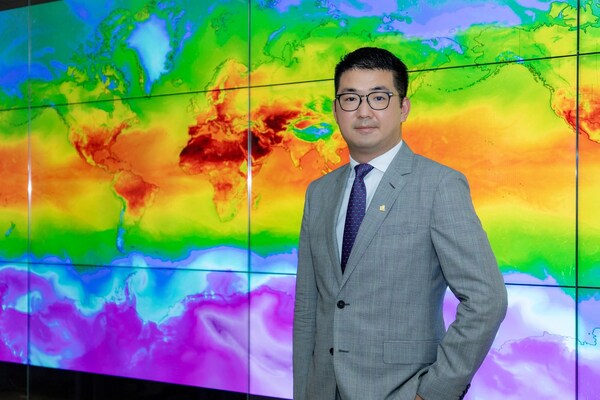HKBU-led research predicts humidity trends will result in widespread heat stress in China
Tue, 11 Jun 2024 14:59:00 +0800
HONG KONG, June 11, 2024 /PRNewswire/ -- A study conducted by a research team led by Hong Kong Baptist University (HKBU) has discovered that there is a trend of increasing humidity in the northern part of China which is not observed in the south. This phenomenon will ultimately become a prominent factor in determining the occurrence of extreme hot and humid weather, and lead to widespread heat stress across the entire eastern part of China, the most populous region of the country, by the end of this century.

Professor Gao Meng, Professor of the Department of Geography at HKBU, predicts that by the end of this century the entire eastern part of China, where 94% of China’s population lives, is likely to experience widespread and uniformly elevated heat stress.
The research findings have been published in the international academic journal Nature Communications.
Humidity determines heat stress difference
Apart from heat, humidity also determines the extent of heat stress felt by humans because it affects our ability to control our body temperature by sweating. In China, while heat stress is recorded in different parts of the country in summer, the relatively humid weather in the south is believed to have resulted in more frequent occurrence of heat stress with severe health and economic impacts. However, regional trends in the levels of humidity and how they co-relate with extreme hot events are not well established.
To assess how humidity affects heat stress in China, a research team led by Professor Gao Meng, Professor of the Department of Geography at HKBU, analysed the wet bulb temperatures in northern and southern China recorded in the 40 years from 1979 to 2018. Wet-bulb temperature is read by a thermometer covered in water-soaked cloth and is a measurement of temperature combined with humidity. It is regarded as being able to reflect more accurately on the impact of heat stress on the human body.
Heat stress difference between north and south narrows
The study found that during the period, the average wet-bulb temperature in northern China increased by 0.23ºC per decade, which is significantly higher than the 0.07ºC per decade in southern China. While southern China has experienced more frequent extreme hot and humid weather in the past, the results revealed that the difference in average wet-bulb temperatures, and thus the extent of heat stress, between northern and southern China is narrowing.
To understand the reason behind this regional variation, the research team examined the trends of humidity recorded during the same period. It was found that average humidity levels in northern China, measured in terms of water vapour pressure, increased by 0.16 hPa per decade during the period, while that in southern China showed a very slight drop. The results concluded a clear distinction in the trends of humidity levels between northern and southern China.
It is attributed to a faster warming in the high-latitude regions of East Asia as a result of global climate change which regulates large-scale atmospheric features. As a result, moisture transport to southern China from the South China Sea is suppressed, and moisture transport from the Pacific Ocean to northern China is accelerated. Apart from atmospheric processes, the reduction in humidity in southern China since 1979 can be explained by the process of urbanization, resulting in less water evaporation from rural landscapes.
Widespread heat stress projected
The research team further applied attribution analysis using climate model simulations, and estimated that the projected rise in wet-bulb temperature in certain part of northern China by the end of this century can be approximately 2-3ºC higher than that in southern China. That means an onward narrowing of the extent of heat stress in northern and southern China, and by the end of this century the entire eastern part of China, where 94% of China's population lives, is likely to experience widespread and uniformly elevated heat stress.
Professor Gao stated, "The results of this study serve as a wake-up call for policymakers, researchers and stakeholders to prioritise the development and implementation of climate adaptation measures. By taking proactive steps now, China can better prepare for the future and protect their populations from the adverse effects of heat stress."
 Homepage
Homepage